7 Day Wine Tour Italy: Uncork the Ultimate Itinerary Through Tuscany, Piedmont & Sicily
There’s a certain rhythm to Italian wine travel that can’t be rushed.
It’s in the rustle of vines in the Tuscany wine region, the perfume of truffles in a Piedmont kitchen, the sea breeze curling through an Etna vineyard. Italy doesn’t just produce wine - it lives it, with passion, precision, and deep ties to the land.
With over 500 native grape varieties and more than 590 officially designated wine zones, Italy offers a tapestry of terroir that no other country can match. Yet, despite wine tourism in the country growing by 10% annually for the last five years, most visitors barely scratch the surface.
Table of Contents
- Why a 7-Day Wine Touring Itinerary is the Best Way to Explore Italy
- Your 7-Day Wine Touring Itinerary in Italy
- Planning & Travel Tips for Wine Lovers
- Slow Travel in the Italian Countryside
Why a 7-Day Wine Touring Itinerary is the Best Way to Explore Italy
A 7-day Italy wine touring itinerary opens the door to something richer.
It’s not just about tasting. It’s about slowing down enough to savor. To follow your glass from vineyard to table, to meet the makers and hear their stories, to walk away not only with a favorite bottle but with a deeper understanding of place, tradition, and craft.
This Italy wine country itinerary blends three standout regions - Tuscany, Piedmont, and Sicily - offering a journey that stretches from Chianti hills to Barolo slopes to lava-fed Etna vines. It’s indulgent without being excessive.
Whether you're planning your first Italy wine tour or returning to explore it more deeply, this 7-day route offers both structure and soul. Or, if you’d prefer a fully tailored experience, explore the possibilities of a custom wine tour of Italy designed around your personal palate and pace.
Italy may be your starting point, but it’s only one expression of wine’s global soul. For more inspiration on choosing where to go next, explore our guide to discovering unique wine countries and selecting your perfect destination.
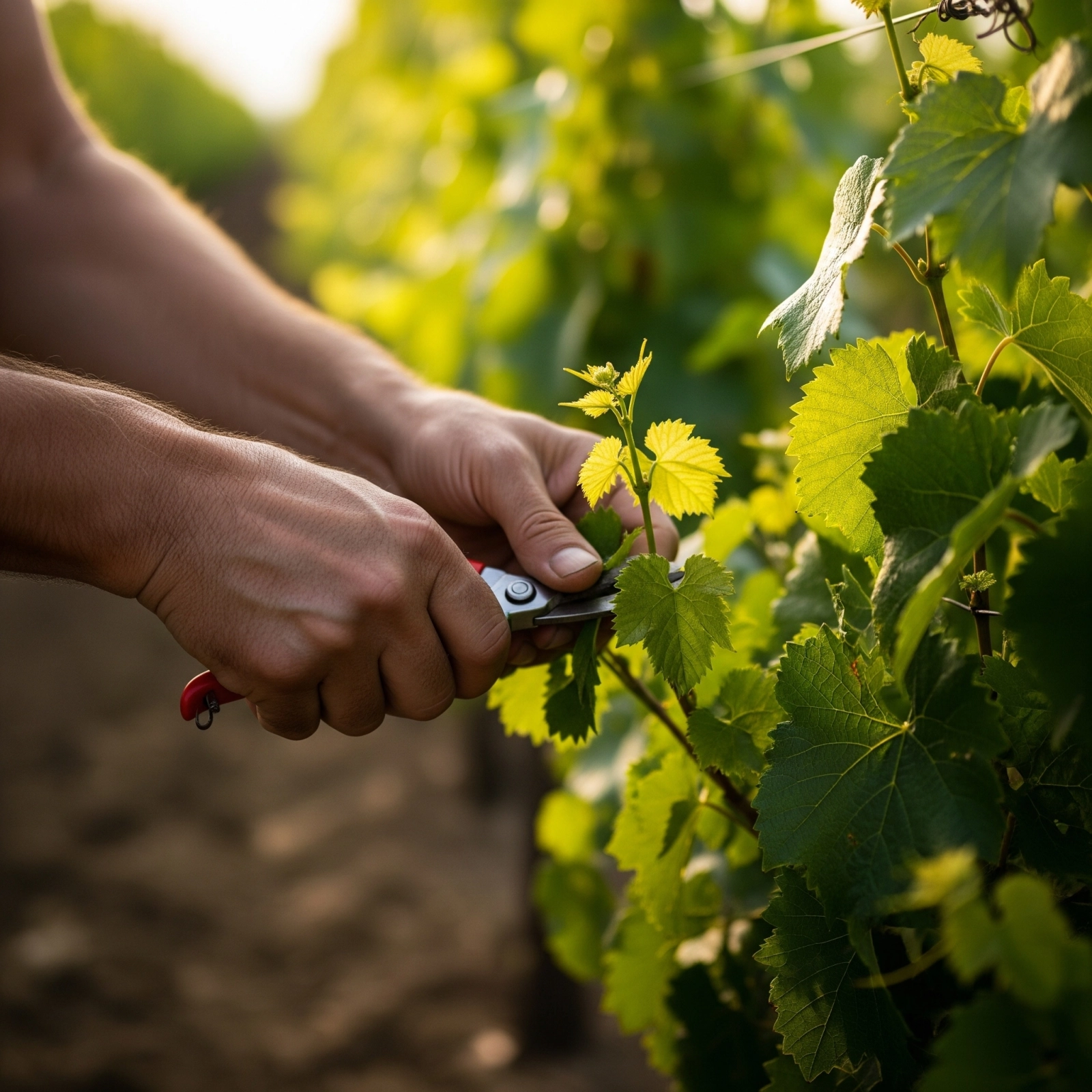
Day 1: Setting the Pace: Arrival in Florence and the Heart of Chianti Classico
Summary Day 1:
- Arrive in Florence and meet your private driver
- Transfer south to the Chianti Classico region
- Check into a countryside relais such as Borgo San Felice or Borgo di Vescine
- Enjoy your first wine tasting at Castello di Brolio, including a tour of the castle grounds and historic cellars
- Taste Chianti Classico wines that blend tradition with modern precision
- Dine at Osteria Le Panzanelle in Lucarelli, with regional dishes and local wine pairings
- End the day with a quiet evening under the stars overlooking the vineyards

Your Italian wine journey begins with a gentle descent into the Renaissance city of Florence. But rather than linger in the city bustle, your private driver whisks you south toward the sun-drenched hills of Chianti Classico, a region where vineyards cling to every slope and medieval towers rise above olive groves.
Tuscany is the ideal starting point - its wines are expressive yet approachable, its pace indulgent but familiar. It’s a perfect introduction to Italy's deeper wine story.
Within an hour, you arrive at your home for the next two nights: perhaps Borgo San Felice, a lovingly restored hamlet-turned-relais nestled in the countryside, or the elegant Borgo di Vescine, where contemporary art mingles with centuries-old vines. You’ll unpack to birdsong, cypress trees, and that golden Tuscan light.
Once settled, your first tasting awaits at Castello di Brolio, one of Chianti’s most storied estates. Walk through the fortified castle grounds where Baron Bettino Ricasoli once helped define the Sangiovese-led blend that still defines Chianti Classico today. Then descend into the vaulted cellars to taste how tradition combines with modern precision in wines of supple acidity and savory depth.
For dinner, head to Osteria Le Panzanelle in nearby Lucarelli: unpretentious, local, unforgettable. Dishes like pici al ragù and grilled lamb pair perfectly with a glass of Gran Selezione from a nearby estate.
Under the stars, with a view over the vineyards and a bottle within reach, your first evening in Tuscany ends as it should: slowly, deliciously, and with a sense that something meaningful has just begun.
Day 2: Depth Over Distance: Vineyards, Villages & Vintners in Chianti Classico
Summary:
- Enjoy a relaxed breakfast on the terrace with views of the Chianti countryside
- Visit a boutique winery such as Istine or Monte Bernardi for an in-depth tasting
- Take a guided vineyard walk to explore how slope and altitude affect Sangiovese expression
- Drive scenic, cypress-lined roads to the historic village of Castellina in Chianti
- Lunch at Taverna Squarcialupi, featuring traditional Tuscan dishes like pappa al pomodoro and wild boar pappardelle paired with local Chianti Classico
- Embrace a slower, immersive pace focused on terroir, tradition, and local connection
Rather than covering more ground, today is about staying local and digging into the nuances of Sangiovese and discovering how even subtle shifts in slope or altitude shape what ends up in your glass.
Wake to the scent of rosemary and fresh bread drifting in on the morning breeze. After a relaxed breakfast on the terrace, your day unfolds at a pace that suits the region: unhurried, immersive, and rich with discovery.
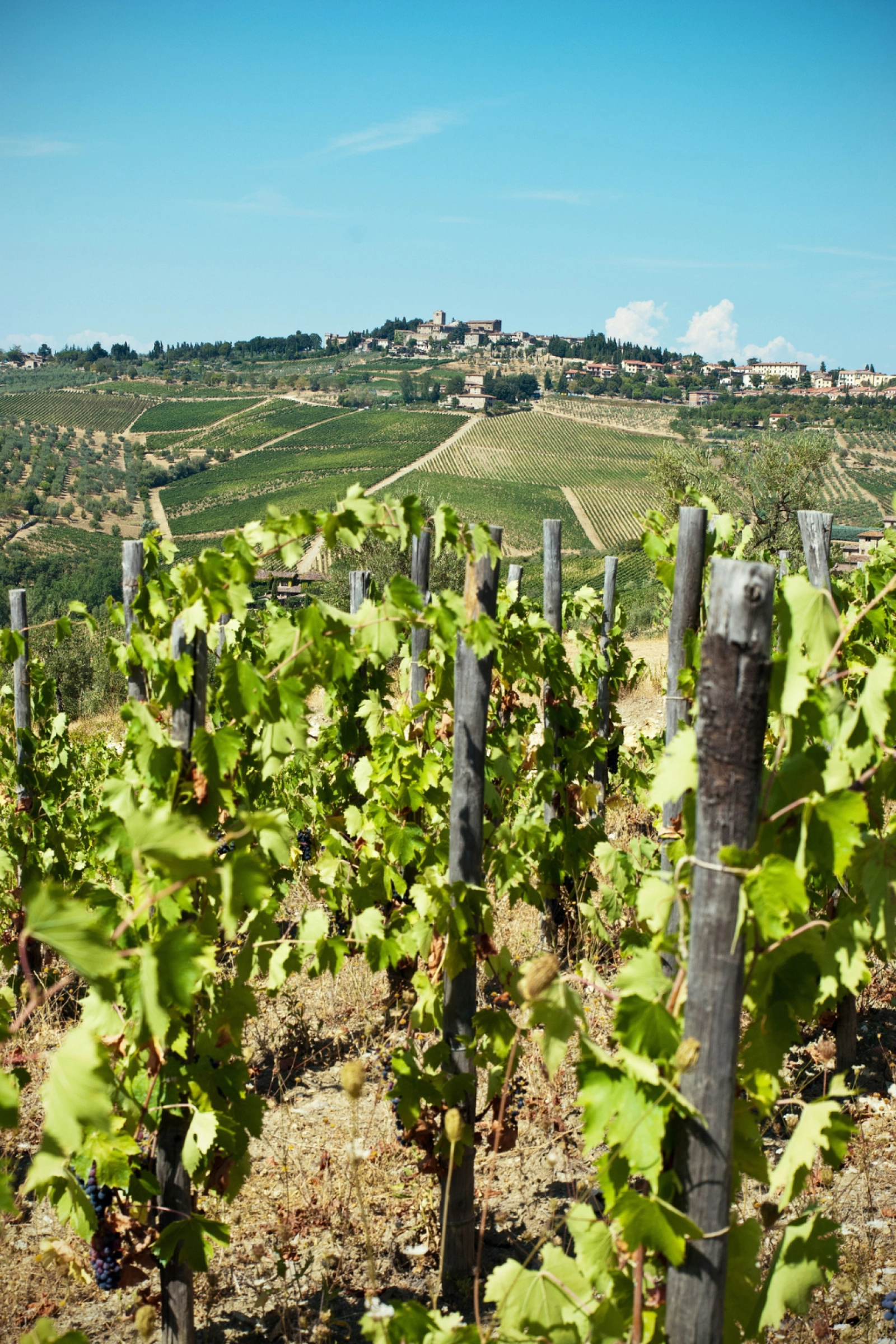
Begin with a visit to a boutique winery like Istine or Monte Bernardi, where new-generation winemakers are reviving forgotten plots and leading Chianti’s quiet revolution in organic farming. A vineyard walk here reveals how dramatically expression changes across a single hillside - and why no two Sangiovese are ever quite the same.
Next, wind through the cypress-lined roads to the walled village of Castellina in Chianti. For lunch, settle into a table at Taverna Squarcialupi, where classics like pappa al pomodoro and wild boar pappardelle arrive with a countryside view and a perfect pour of Chianti Classico. Here, food isn’t just a pairing, it’s part of the terroir.
This afternoon, explore the hilltop hamlet of Volpaia, where winemaking threads through cobbled alleys, medieval chapels, and ancient stone walls. A guided tasting here feels like stepping into a living timeline: one shaped by tradition, climate, and the steady evolution of taste.
If energy allows, end the day with a golden-hour walk through the vines or a casual olive oil tasting at a nearby frantoio. For dinner, return to your hotel or venture out to La Cantinetta di Rignana, a candlelit countryside hideaway where truffle risotto and aged Brunello invite quiet celebration.
Today has taken you deeper - not just into the hills of Chianti, but into its heart. The beauty of this place lies not in how far you travel, but in how closely you pay attention.
Day 3: A New Expression: From Tuscany to Piedmont, Arrival in Barolo Country
Summary:
- Enjoy a final breakfast in Chianti overlooking the Tuscan hills
- Private transfer to Florence’s Santa Maria Novella station
- Travel by high-speed train to Turin (approx. 3.5 hours)
- Scenic private transfer from Turin into the Langhe hills of Piedmont
- Arrive and check into a boutique relais in La Morra or Monforte d’Alba, such as Relais San Maurizio or Arborina Relais
- Afternoon tasting at a historic Barolo estate like G.D. Vajra or Marchesi di Barolo, featuring Nebbiolo wines shaped by terroir and tradition
- Dinner at a refined local restaurant such as Locanda Fontanazza or La Ciau del Tornavento, featuring seasonal Piedmontese cuisine and exceptional wine pairings
- Begin to settle into the more contemplative pace and character of the Piedmont region
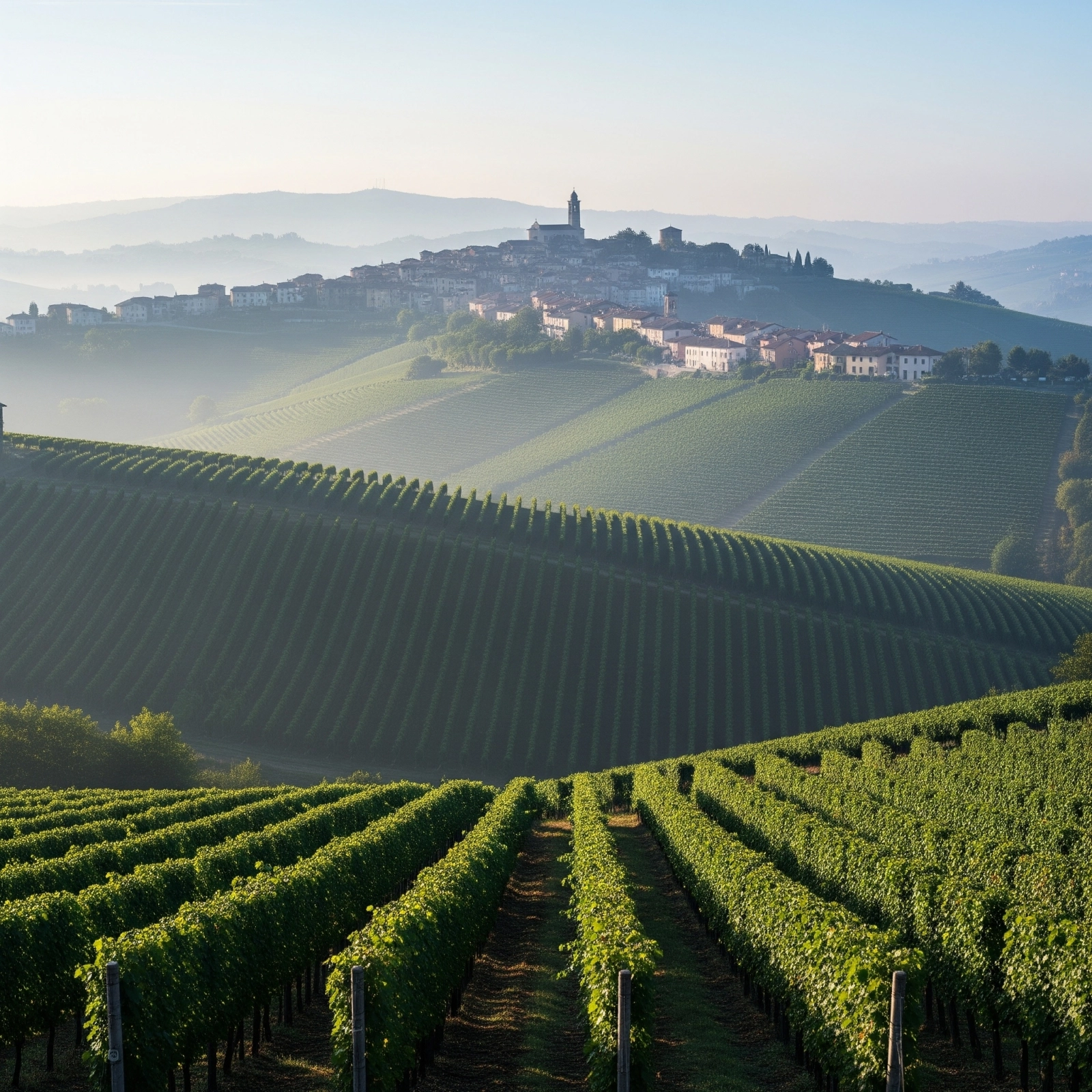
After the warmth and expressiveness of Chianti, today offers a tonal shift. You’re heading north into Piedmont, a region of elegance, restraint, and quiet power. The wines are more contemplative, the terrain more misted and subdued. This transition marks a new emotional chapter in your journey.
Following a final breakfast overlooking the Tuscan hills, your driver takes you to Florence’s Santa Maria Novella station for a high-speed train ride to Turin (approx. 3.5 hours). As the countryside flickers past your window, this scenic journey offers time to reflect on the generosity of Tuscany and reset your palate for what lies ahead.
From Turin, a second transfer winds you into the Langhe hills. Here, vineyards unfurl in painterly rows, interrupted by hazelnut groves and terracotta villages perched like watchtowers over the vines. You’ll base yourself in La Morra or Monforte d’Alba, intimate hilltop hamlets chosen for their panoramic views and proximity to the most coveted Barolo vineyards, yet offering a quieter rhythm than the larger town of Alba.
Settle into your boutique relais: perhaps the spa-laced serenity of Relais San Maurizio or the design-forward Arborina Relais, where your suite may open onto rows of Nebbiolo vines framed by the distant Alps.
This afternoon, your first tasting in Barolo country awaits - at a historic estate like G.D. Vajra or Marchesi di Barolo. Here, Nebbiolo shows its age-worthy structure and ethereal perfume, shaped by the fog, the hills, and the meticulous hand of tradition.
For dinner, opt for the refined Locanda Fontanazza or the Michelin-starred La Ciau del Tornavento, where white truffles crown tajarin and the wine list is a love letter to the Langhe. As you sip your first glass of Barolo and take in the landscape that shaped it, the mood shifts: slower, deeper, and more introspective. You’ve arrived in a place that asks you not to rush, but to truly absorb.
Day 4: The Beauty of Balance: Barolo, Barbaresco & the Art of Slowness
Summary:
- Begin the day with a relaxed breakfast overlooking misty vineyards in Piedmont
- Meet your private guide for a full day of immersive wine tasting focused on Nebbiolo
- Visit top estates in Barbaresco, such as Produttori del Barbaresco or Bruno Rocca, to explore Nebbiolo’s more graceful, floral expression
- Enjoy a vineyard walk or barrel tasting for deeper insight into terroir and winemaking philosophy
- Stop for lunch in the hilltop village of Neive at L’Aromatario or Borgo Vecchio, featuring local Piedmontese dishes and wines like Dolcetto or Arneis
- In the afternoon, return to the Barolo zone for a second tasting at a boutique estate like Cavallotto or Elio Altare, emphasizing structure and age-worthiness
- Optional visits: Piazza Barolo wine museum or a golden-hour vineyard walk
- Return to your relais for a glass of Barbera or a peaceful spa moment, closing the day in quiet reflection and connection to place
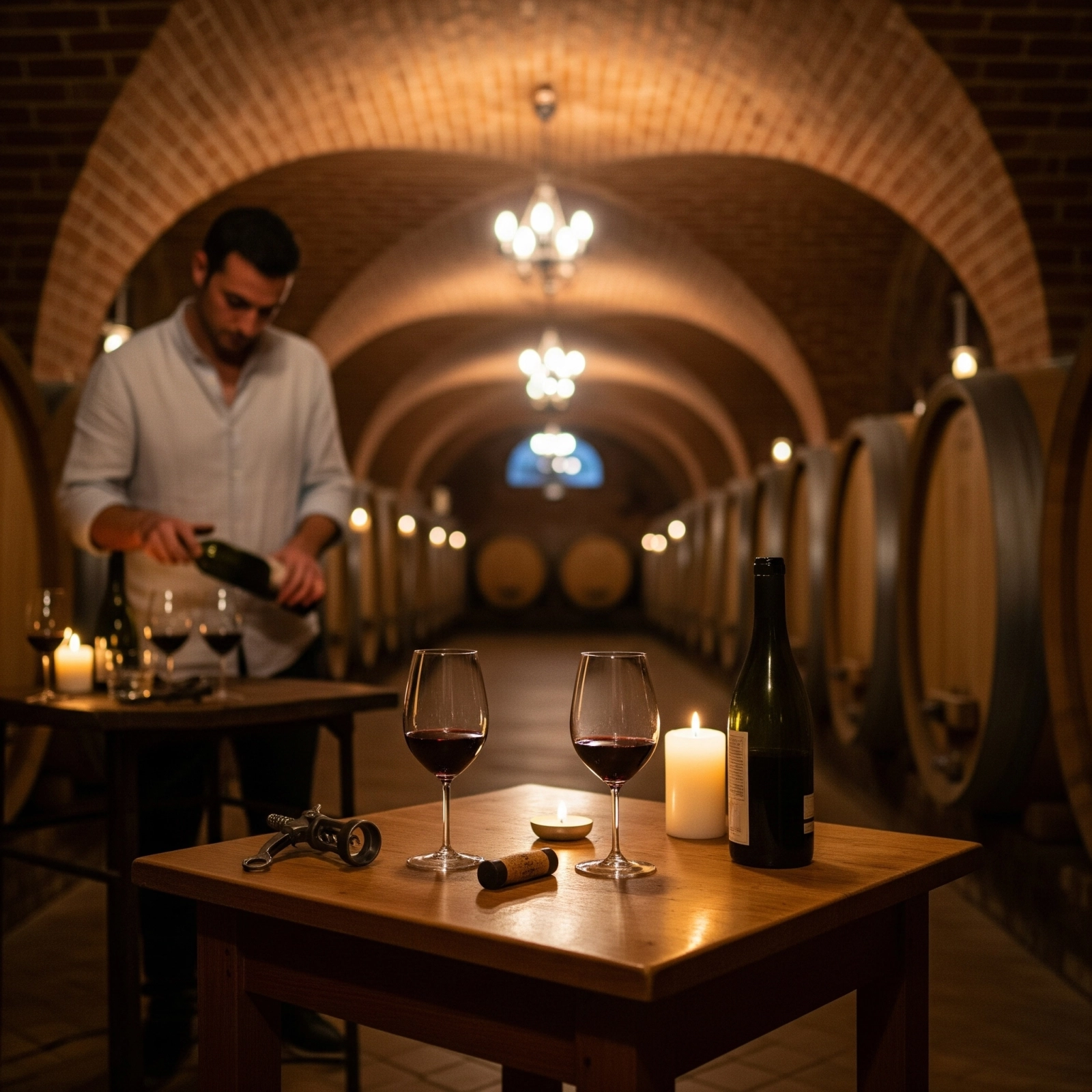
Today is about contrast, complexity, and clarity. In Piedmont, balance is everything - between power and elegance, structure and grace. As you explore both Barolo and Barbaresco, you’ll come to appreciate how one grape, Nebbiolo, can express an entire emotional range, shaped by soil, slope, and time.
After a relaxed breakfast overlooking the mist-veiled vineyards, your guide meets you for a day of immersive tasting. The pace slows deliberately here. In Piedmont, slowness reveals depth. These wines, like the people who make them, ask you to linger.
Begin in Barbaresco, the quieter cousin to Barolo. At estates like Produttori del Barbaresco or Bruno Rocca, you’ll taste Nebbiolo’s more graceful side - silkier, floral, less austere. Learn how subtle soil shifts and microclimates across even a few hectares create dramatically different wines. A walk through the vines or a quiet barrel tasting with the winemaker offers rare insight into how place becomes flavour.
Break for lunch in Neive, a postcard-perfect hill town named one of Italy’s most beautiful villages. At L’Aromatario or Borgo Vecchio, seasonal dishes like vitello tonnato, raw Fassona beef, or handmade agnolotti reflect the honesty and restraint that define this region. A glass of local Dolcetto or Arneis brings out the soul of the meal.
In the afternoon, return to the Barolo zone for a second encounter with Nebbiolo, this time in its more structured, age-worthy form. Visit a boutique producer like Cavallotto or Elio Altare, where organic practices and intimate cellar tours foster meaningful connection. These are the kind of visits where stories linger: the vineyard dog asleep in the sun, the winemaker explaining tannins with passion and stained hands.
Optional stops could include Piazza Barolo, with its small but insightful wine museum, or a golden-hour vineyard walk where the light pools between rows of vines and the air smells of hay and earth.
Back at your relais, relax with a glass of Barbera on the terrace or enjoy a restorative moment in the spa. As the day softens into evening, you’ll understand: this region doesn’t shout. It whispers. And in the quiet, you hear more.
Day 5: Volcanic Awakening: From Piedmont to Sicily’s Fiery Slopes
Summary:
- Begin the day with breakfast in Piedmont and reflect on the journey so far
- Private transfer to Turin Airport for a short flight to Catania, Sicily
- Meet your driver upon arrival and ascend to Mount Etna’s northern slopes through dramatic volcanic scenery
- Check into a boutique retreat such as Monaci delle Terre Nere or Donna Carmela, offering immersive views and onsite wine culture
- Enjoy a light Sicilian lunch featuring local seasonal ingredients
- Visit a pioneering Etna winery such as Tenuta delle Terre Nere or Graci for a tasting of volcanic wines made from Nerello Mascalese and Carricante
- Learn how altitude, lava rock, and centuries-old terraces shape the wines of this dynamic region
- Dine under the stars with views of Mount Etna—either at the Michelin-starred Otto Geleng in Taormina or a slower, terroir-driven meal at your hotel
- End the day absorbing the bold energy and wild rhythm of Sicily’s volcanic wine landscape
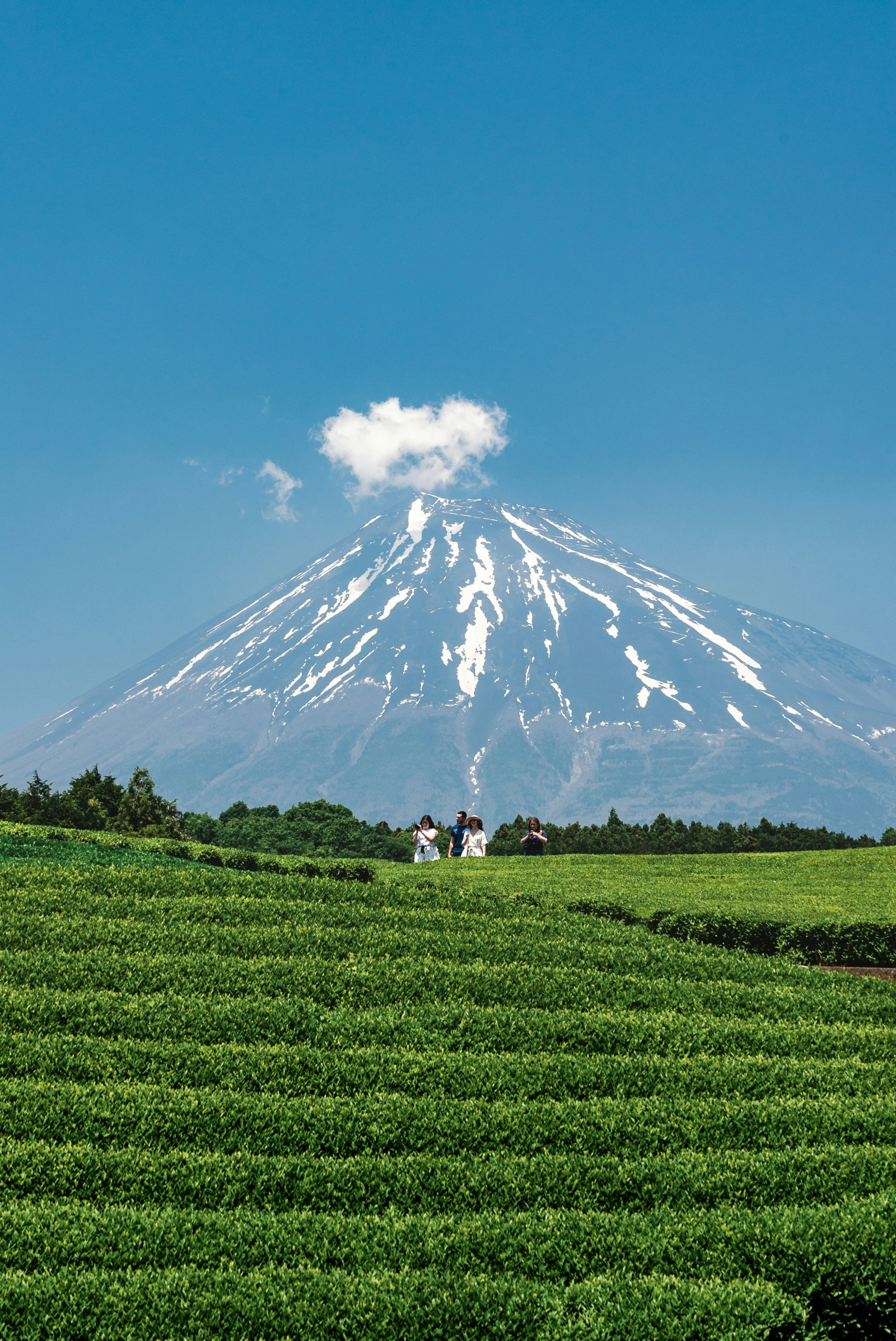
From the contemplative hills of Piedmont to the elemental drama of Etna, today marks a turning point in your wine journey. If Barolo taught patience and subtlety, Sicily introduces intensity and bold expression, where lava, salt, and sunlight shape wines that feel alive on the palate.
After breakfast, your private transfer takes you to Turin Airport, where a short flight whisks you south to Catania, the vibrant gateway to Etna’s wine region. This scenic shift offers more than just logistics - it offers reflection. As the terrain transforms from Alpine softness to volcanic energy, your palate resets. The tempo quickens, the air thickens, and the story sharpens into contrast.
Your driver greets you upon arrival and begins the winding ascent to the northern slopes of Mount Etna, where black volcanic soil gives way to vines planted centuries ago. Here, altitude and fire converge. The scenery is arresting: citrus groves, lava stone walls, snow-capped peaks, and vines clinging to terraces etched into the mountain.
Check into a boutique retreat like Monaci delle Terre Nere, where contemporary design meets agricultural heritage, or Donna Carmela, framed between Etna and the Ionian Sea. These properties weren’t chosen for luxury alone—they embody place. They put you at the centre of Etna’s wild beauty, with wine cellars, orchards, and tasting rooms on-site.
After a light Sicilian lunch, your first volcanic tasting begins. Visit a pioneering estate like Tenuta delle Terre Nere or Graci, where native grapes like Nerello Mascalese and Carricante produce wines of striking tension: taut, mineral, perfumed. Here, each sip tells a story of elevation, eruption, and evolution.
In the evening, dine beneath the stars with views of the mountain. You might opt for a Michelin-starred experience at Otto Geleng in Taormina, where Sicilian ingredients are elevated to fine art, or stay onsite for a slower, soul-nourishing meal where every bite, from pistachio pesto to wood-fired bread, tastes of the land.
Tonight’s wines carry the energy of Etna in every pour. This is not just a new region. It’s a new rhythm, a final crescendo - untamed, unforgettable, and impossible to replicate.
Day 6: Where Land Meets Legacy: Volcanic Wines & Coastal Day Traditions
Summary:
- Begin the day with breakfast among citrus groves and Etna’s morning mist
- Depart with your private guide for an in-depth visit to Passopisciaro or Benanti, two iconic Etna producers
- Walk through terraced vineyards framed by lava stone walls and learn how altitude, exposure, and tradition shape Etna wines
- Enjoy an unhurried tasting of Carricante and Nerello Mascalese, highlighting Etna’s unique volcanic terroir
- Midday, descend to the coast for lunch in a fishing village such as Santa Maria La Scala, featuring local seafood and chilled Sicilian whites
- In the afternoon, visit a small, family-run estate like I Vigneri or Girolamo Russo for a more rustic and personal winemaking experience
- If time allows, take a golden-hour vineyard walk or relax at your hotel with a slow aperitivo
- End the day with an alfresco dinner, reflecting on the contrasts and balance that define Etna’s wines and spirit
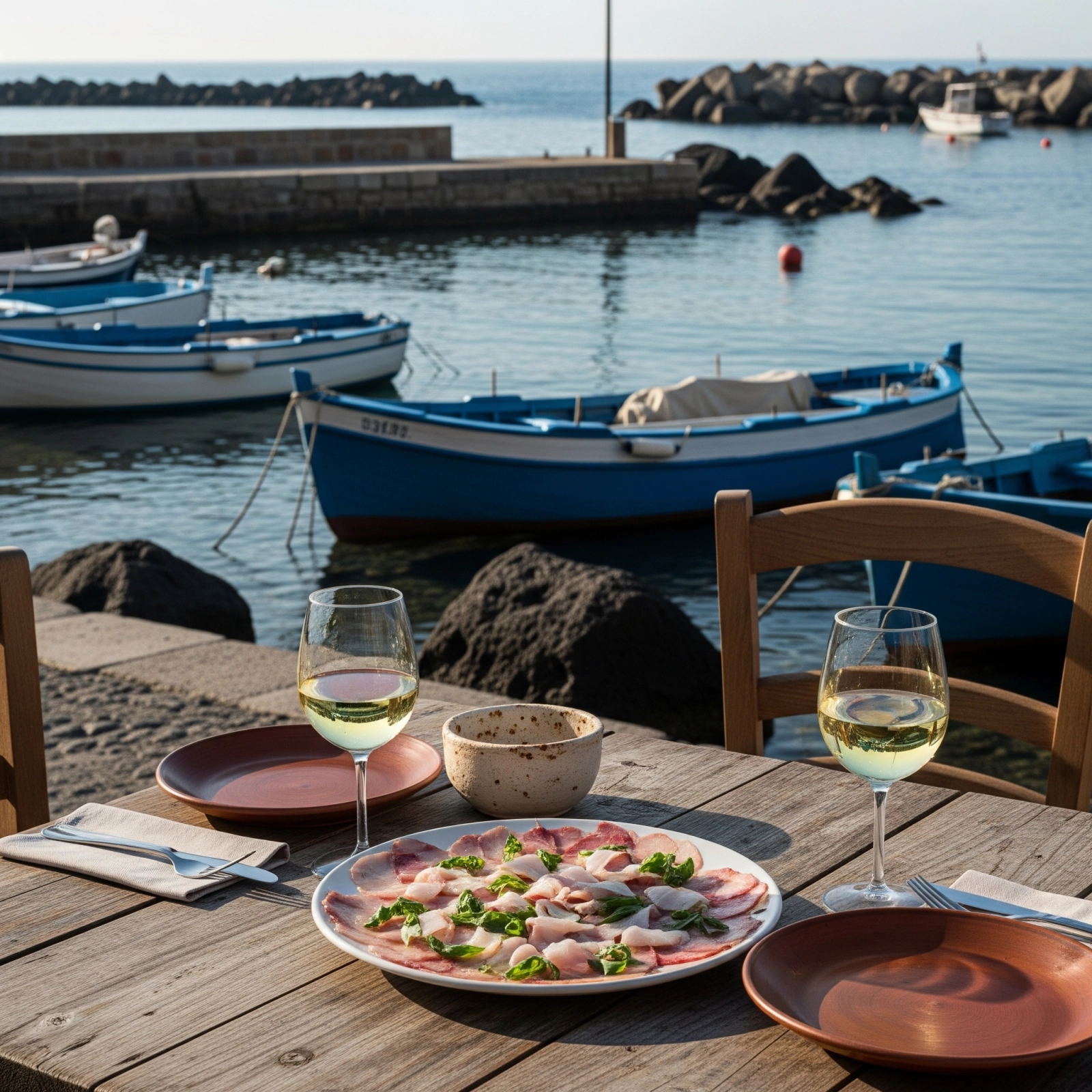
Today is devoted to immersion, into geology, tradition, and the fiercely rooted soul of Sicilian winemaking. On Mount Etna, wine isn’t just cultivated. It’s coaxed from lava, altitude, and ancestral knowledge.
After breakfast among citrus trees and morning mist, you set off with your private guide toward Passopisciaro or Benanti - two emblematic producers leading Etna’s modern renaissance. The choice is deliberate: Passopisciaro for its structured elegance and altitudinal clarity, Benanti for its legacy and innovation. As you walk through terraced vineyards framed by stone walls and cloud shadows, you’ll understand how altitude and exposure shape not only grapes, but philosophies.
Your tasting is unhurried. You swirl Carricante whites that taste like sea spray and stone, then move to Nerello Mascalese, a red as transparent and tense as Burgundy, yet unmistakably Sicilian. With each pour, the contrast sharpens: the restraint of Piedmont behind you, the volcanic energy of Etna now pulsing forward.
Midday, descend toward the coast for a meal that speaks of place. In a fishing village like Santa Maria La Scala, dine by the water on dishes like swordfish carpaccio, sea urchin pasta, and grilled fennel. The wines? Local whites chilled just enough to cut through salt and sun. It’s not just a lunch - it’s a sensory bridge between mountain and sea, minerality and memory.
In the afternoon, visit a smaller, family-run estate such as I Vigneri or Girolamo Russo. These are not polished wineries; they are living expressions of legacy, where foot-stomping, amphorae, and unfiltered passion define each bottle. These visits aren’t curated - they’re lived. Expect the winemaker to pour with soil under their nails and stories on their lips.
If time allows, end with a golden-hour vineyard walk or return to your hotel for a soak, a slow aperitivo, and a final alfresco dinner. By now, Etna has left its mark, not just on your palate, but on your perspective. This place lives in extremes, yet the wines find balance. That’s the magic.
Tomorrow, you return to street-level Sicily. But tonight, you’re still on the mountain.
Day 7: Full Circle: Market Strolls & Departure from Catania
Summary:
- Begin with a relaxed breakfast at your hotel on the slopes of Mount Etna
- Transfer to Catania and spend the morning immersed in the city’s vibrant local culture
- Explore the lively fish market near Piazza del Duomo, filled with fresh seafood, local produce, and street food vendors
- Optional experiences (time permitting):
- Walk along the lava-paved Via Etnea
- Visit the Museo dello Sbarco for historical context
- Step into a quiet baroque church for a reflective moment
- Transfer to Catania Airport for your departure
- Conclude your journey not just with souvenirs, but with lasting impressions of Italy’s regions, people, and wines
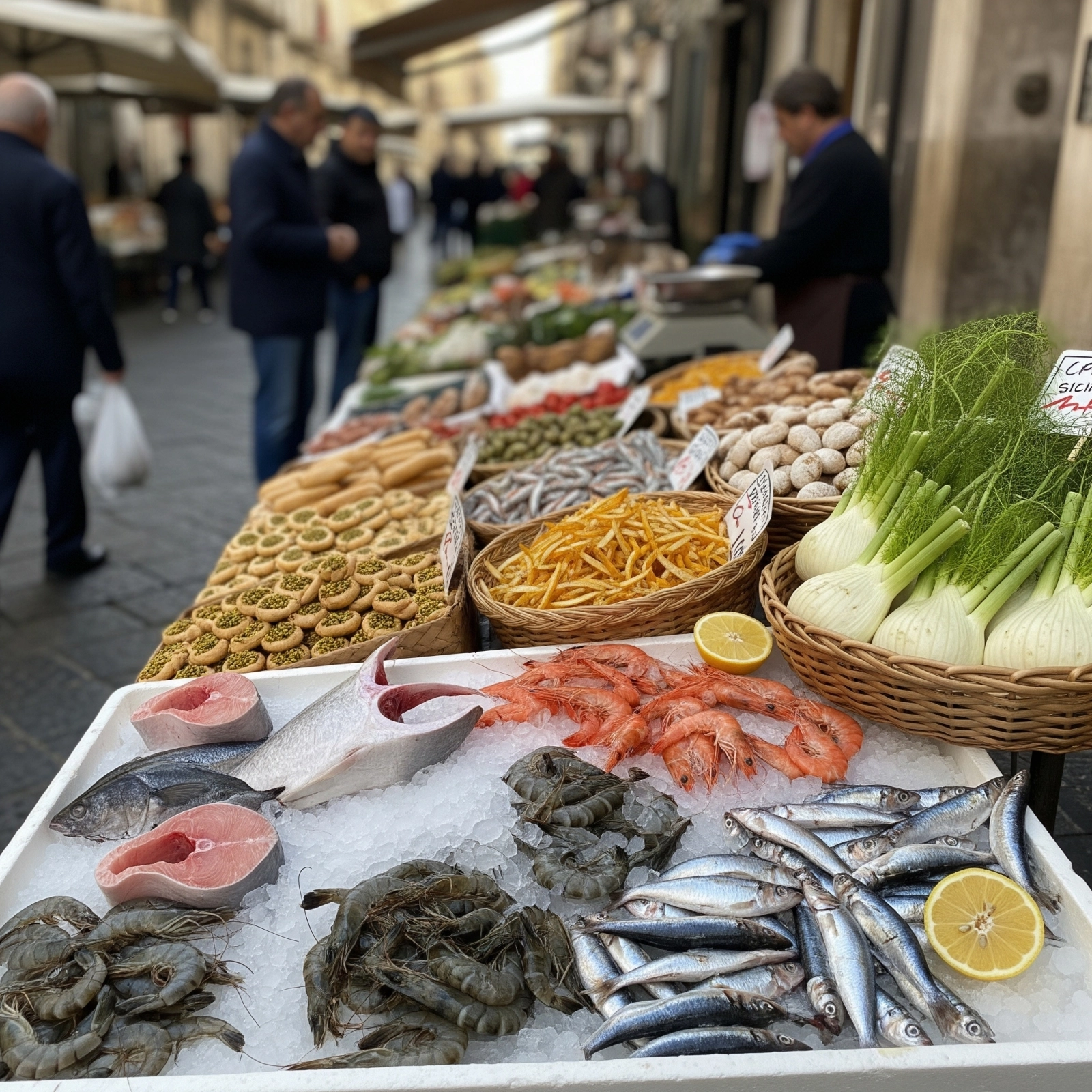
Your final day isn’t about new discoveries, it’s about reflection. After a week of tasting Italy’s vinous soul, today is an invitation to ground yourself in its daily rhythm.
After a relaxed breakfast, your driver takes you into Catania, a city that pulses with raw energy and sun-drenched history. The Piazza del Duomo shimmers in the morning light, but it’s the fish market that captures your senses - a feast of colour, sound, and scent. Swordfish steaks glisten beside heaps of wild fennel. Street vendors call out, offering candied citrus, pistachio pastries, and freshly fried arancini.
This isn’t curated Sicily, it’s real, lived, and deeply felt.
If time allows, stroll the lava-paved Via Etnea, visit the Museo dello Sbarco for a glimpse into wartime Sicily, or duck into a quiet church to absorb a moment of stillness. These final hours offer a contrast to the vineyard stillness you’ve come to love - but they belong to the same story.
From here, your driver takes you to Catania Airport, whether you're bound for Rome, Paris, or home. Your luggage might carry a few special bottles, but what lingers most are the impressions etched deeper: a hillside in Chianti at dusk, a winemaker’s smile in Barolo, the taste of lava in a glass of Etna Rosso.
What began as a wine tasting became something more - a connection to place, to people, to the passage of time itself.
Because in Italy, wine isn’t just made. It’s lived. And now, so have you.
Planning & Travel Tips for Wine Lovers
A well-paced wine tour in Italy is equal parts preparation and spontaneity - and knowing a few local insights can elevate your experience from enjoyable to unforgettable.
When to Go
The best months for wine touring in Italy are May through June and September through October. These shoulder seasons offer comfortable weather, fewer crowds, and (depending on the region) opportunities to witness the vineyard cycle in action from flowering to harvest.
Tasting Etiquette
Most top-tier wineries require advance reservations, especially those in Piedmont and Tuscany. Aim to book 3 - 4 weeks ahead, particularly during peak seasons. Limit yourself to two tastings per day, allowing time to savour each visit rather than rushing between appointments. Avoid wearing perfume or cologne, as strong scents can interfere with the tasting experience. And when in doubt, ask questions: Italian winemakers are often passionate storytellers who love to share.
Transport
Italy’s regional train network connects many major towns, but a private driver offers the most comfort and flexibility - especially when tastings are involved. If you prefer to self-drive, be prepared for narrow country roads and always designate a non-drinking driver.
Packing Tips
Wine cellars stay cool year-round, so bring a layer, even in summer. Comfortable shoes are essential for vineyard walks and cobbled villages, and don’t forget a small notebook or app to jot down your tasting impressions - some of your favourites may be hard to find again outside Italy.
For a deeper dive into timing, pacing, and essential considerations, explore our complete guide on how to plan a trip to wine country.
Slow Travel in the Italian Countryside
In Italy, time is an ingredient. It seasons the wine, shapes the land, and infuses daily life with something deeper - a kind of reverence for the present moment. That’s why slow travel isn’t just a style here, it’s a cultural truth.
Instead of cramming your itinerary with winery checklists, focus on 2 - 3 meaningful experiences per day. One morning tasting, a long, lazy lunch, and an afternoon visit or vineyard walk creates the space for connection, not just consumption.
This slower pace allows for deeper memories: a spontaneous barrel sample, an impromptu lunch with a winemaker’s family, or simply the silence of standing between rows of vines as the light shifts.
It also supports the small-scale producers, family-run trattorias, and independent shops that define the soul of Italy’s wine regions. Consider staying in an agriturismo, where you’ll often sleep steps from the vineyards, or booking an e-bike tour through the countryside for a more grounded way to explore.
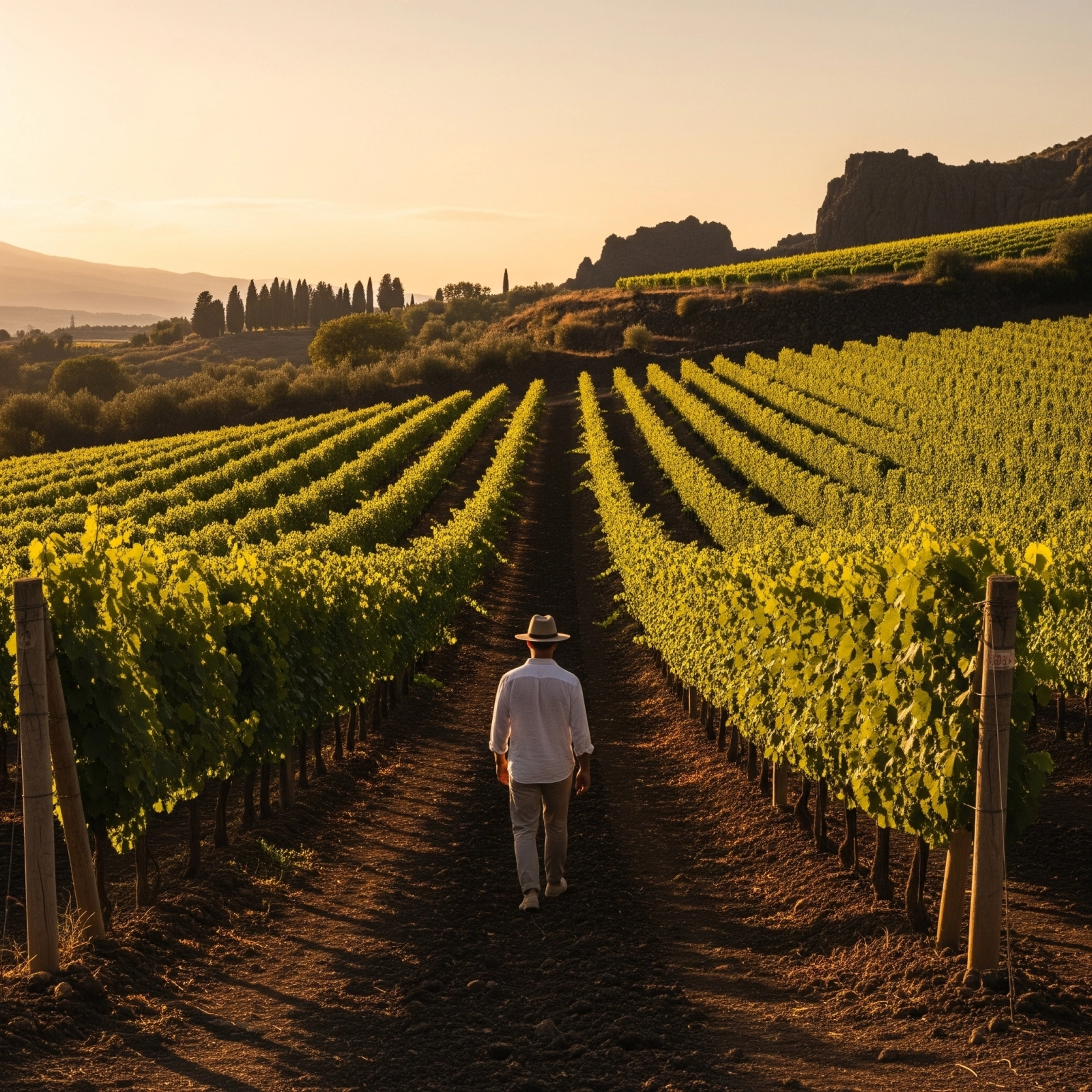
Add a moment of wellness if time allows: a vineyard stroll, an olive oil tasting, or even just a long, sun-dappled picnic under the vines.
Because here, in the birthplace of “la dolce vita,” slowing down doesn’t mean missing out. It means experiencing more - one sip, one story, one breathtaking view at a time.
If this resonates with how you prefer to explore, you may enjoy reading about the wine traveler’s mindset—a deeper reflection on what makes wine travel so transformative.
Why Book Your 7-Day Italy Wine Tour With Into the Vineyard?
At Into the Vineyard, we believe a true Italian wine journey isn’t just about what’s in the glass, it’s about how it’s poured, where you’re standing, and who you’re with when it happens.
We don’t offer off-the-rack tours. We craft bespoke, immersive itineraries that bring Italy’s diverse wine regions to life from the sunlit hills of Chianti to the noble cellars of Barolo and the volcanic vineyards of Etna. Whether you’re harvesting grapes alongside a Sicilian winemaker, swirling Barbaresco at golden hour, or pairing Brunello with handmade pasta in a hilltop osteria, your journey will be designed around your pace, palate, and passions.
With seamless travel planning, hand-picked guides, and exclusive access to family-run estates and cultural gems, we handle the details so you can savour the experience (and the wine) without distraction.
Ready to uncork your dream Italy wine tour?
Explore our sample Italy itineraries or reach out to begin planning your own 7-day Italy wine touring itinerary - one rooted in culture, craft, and countryside, designed entirely around you.
What we offer is more than logistics—it’s a feeling of ease, depth, and personal resonance. Learn more about the effortless journey and how modern luxury travel is being redefined.